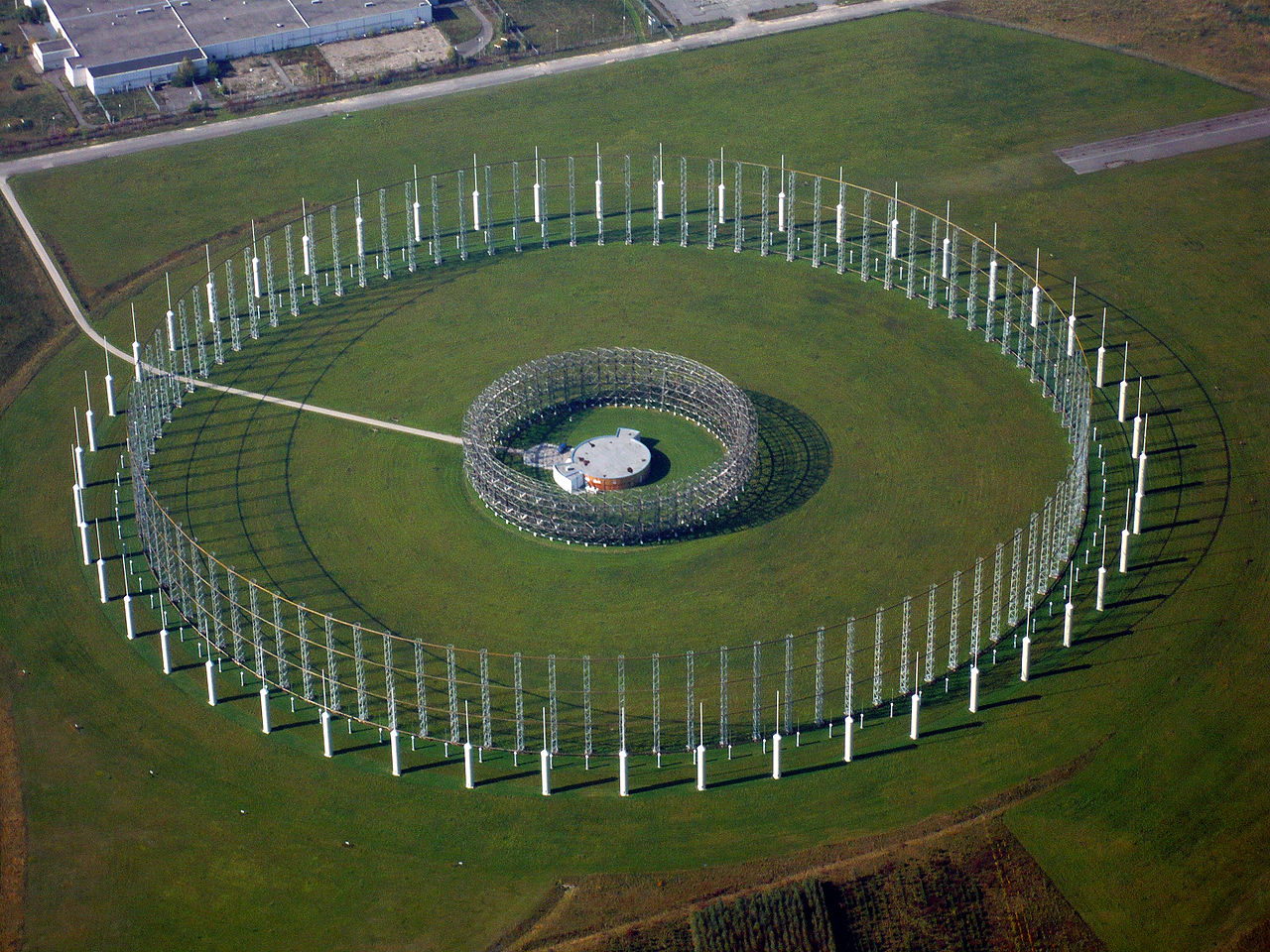https://en.wikipedia.org/wiki/USASA_Field_Station_Augsburg
United States Army Security Agency (USASA) Field Station Augsburg was the site of a Wullenweber AN/FLR-9 (V8) radio direction finder, established during the Cold War. Field Station Augsburg was located on Gablingen Kaserne, near the village of Gablingen just north of Augsburg in Bavaria, West Germany. It was one of nearly 20 field stations positioned strategically around the world by the U.S. Armed Forces during the Cold War. Field Station Augsburg opened in 1970[1] and closed in 1998, at which time it was turned over to the German government.
The Station was owned and managed by the National Security Agency and staffed by the United States Army Security Agency (USASA), which later became U.S. Army Intelligence and Security Command (INSCOM), in conjunction with other branches of the U.S. Military and various allied forces. Personnel assigned to Field Station Augsburg were composed[ of individuals who scored high enough on the Army entrance exams to be classified as "ST" or a skilled technician, which is the Army's top-ranked job category. The Station was staffed 24 hours a day, by means of rotating shifts.[1] The Station's mission was to monitor the communications of Cold War enemy nations, their allies, and client states around the world. The information gathered was time-sensitive and, based on its importance and classification, that information was collected, analyzed and passed through intelligence channels on a "real-time" basis.
With the end of the Cold War, Field Station Augsburg lost much of its strategic value. It is currently reputedly used by the Bundesnachrichtendienst.[2] The Wullenweber / Flair-9 antenna is still in place as of March 2022.
https://en.wikipedia.org/wiki/Circularly_disposed_antenna_array
A circularly disposed antenna array (CDAA), sometimes referred to as a circularly disposed dipole array (CDDA) or a wullenweber,[1] is a large circular antenna array used for radio direction finding. They are used by military and government agencies to triangulate radio signals for radio navigation, intelligence gathering, search and rescue, and enforcement of broadcasting laws. Because their huge circular reflecting screens look like circular fences, some antennas have been colloquially referred to as "elephant cages". The term "wullenwever" was the World War II German cover term used to identify their secret CDAA research and development program; its name is unrelated to any person involved in the program.
Post-war development
Although Pietzner, Schellhoss, and Wächtler retired in West Germany, some of their second-echelon technicians were taken to the USSR after the war. At least 30 Krug (Russian for circle) arrays were installed all over the Soviet Union and allied countries in the 1950s, well before the U.S. military became interested and developed their CDAAs. Several Krugs were installed in pairs less than 10 kilometers from each other, apparently for radio navigation purposes. At least four Krugs were installed near Moscow; just to the north, east and south (55.46408°N 37.3698°E) of the city. The Krugs were used to track the early Sputnik satellites, using their 10 and 20 MHz beacons, and were instrumental in locating re-entry vehicles. The Soviet Krug arrays also use the 40-element CDAA configuration.
The array in Skibsby was extensively studied by the British and then destroyed following the war in accordance with the Geneva Convention. Dr. Wächtler arranged to have a second array built, at Telefunken expense, at Langenargen/Bodensee, for further experimentation after the war. In the years following the war, the U.S. disassembled the Langenargen / Bodensee array and brought it back to the U.S., where it became known as the "Wullenweber" array.
One of the German antenna researchers, Dr. Rolf Wundt, was one of hundreds of German scientists taken to the U.S. by the Army after the war under Operation Paperclip. He arrived in New York in March 1947 on the same ship as Wernher Von Braun and his wife and parents. He was first employed by the U.S. Air Force and then GT&E Sylvania Electronics Systems on CDAA and other antenna projects.
